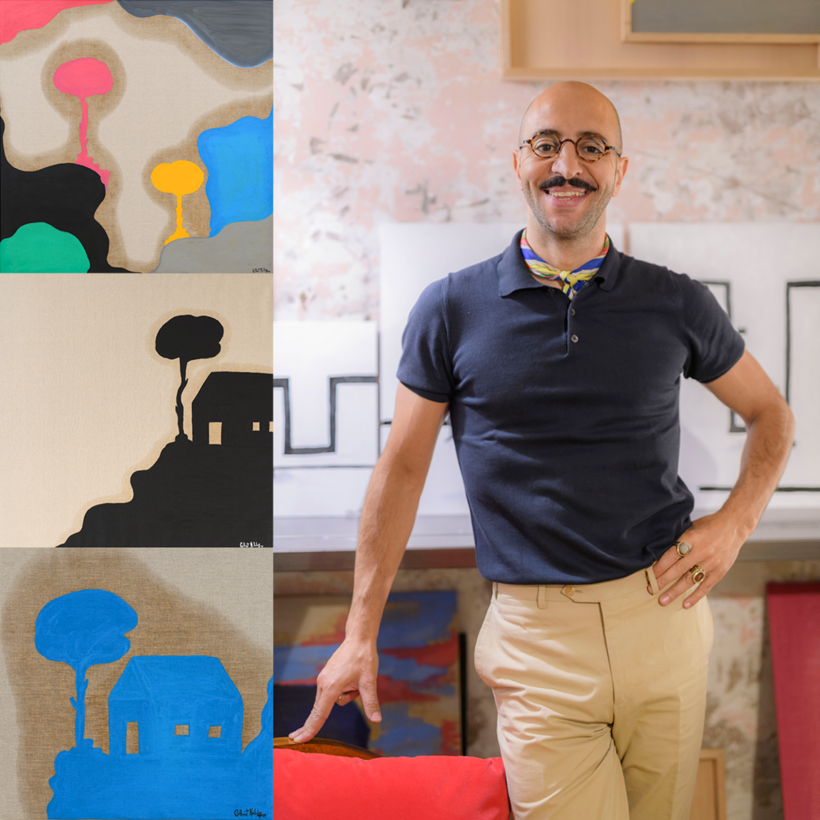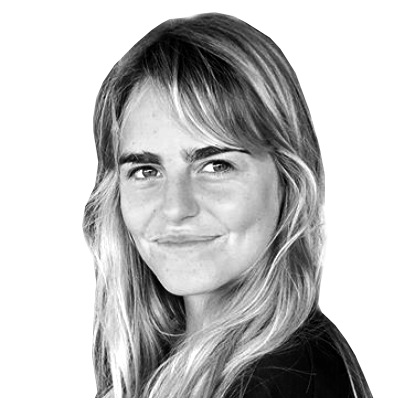“It is not a boutique,” the Lebanese painter and designer Gilbert Halaby says of his eclectic Rome atelier, where vintage belts, hand-painted silk sarongs, custom jewelry, and one-of-a-kind bags coexist with books by Arabic philosophers. “It is like a small salotto,” he adds—Italian for “living room.”
Maison Halaby is tucked away on the quaint Via di Monserrato, just steps away from the bustling Campo de’ Fiori. Other elegant boutiques, such as Chez Dede, Soledad Twombly’s L’Archivio di Monserrato, and Poltrone Couture, have also quietly sprung up in the area in recent years. “We don’t have the crowd,” Halaby says. “We don’t have the tourists, so if people want to come to you, they need to know.”
Suffice it to say, enough people know. Since the store’s opening, in 2017, Queen Rania of Jordan, Princess Soraya of Afghanistan, and several Roman aristocrats—including members of the Borghese, Caracciolo, and Chia families—have visited. Halaby entertains in straw hats and colorful suits, and serves Lebanese tea and cookies.

Though he has designed jewelry for Lady Gaga and won several awards, Halaby, 44, has recently slowed down his fashion output. Today, his mind is very much on one thing. “I’ve never stopped painting,” he says.
Last March, Halaby hosted his first solo show of paintings, in Beirut, to wide acclaim. Then, in June, he presented his series “Une Comédie Romaine,” executed in blocks of Luis Barragán–inspired color, at Maja Arte Contemporanea, in Rome. And next week, he’ll exhibit work from his “Domus Berytus” with the Italian Cultural Institute at Artbooth Gallery, in Abu Dhabi. “It’s what I dreamt of all along,” he says. “It’s like maturing, like a fruit.”
“We don’t have the crowd. We don’t have the tourists, so if people want to come to you, they need to know.”
Though Halaby exudes charm and worldliness, he grew up far removed from the idyllic streets of Rome—in a small village at the foot of Mount Lebanon during the 1980s, when civil war between Christians and Palestinian militants was raging. “When you look at your childhood in the war, you don’t see ‘artist’ in your horizon,” he says.

Nevertheless, Halaby’s neighbor was a painter, and the seed of inspiration was sown. “I used to go and peek at him, painting,” he says, “and I knew there and then that this is what I want to be.... But I couldn’t. I had to keep it on the side, you know, hide it.”
In the late 1990s, Halaby moved to Beirut to study archaeology at Lebanese University. “It was the nearest domain to deciphering everything that came before us,” he says. On weekends, he worked in stores and cafés.
Halaby traveled to Rome for the first time in 2003. It was a quiet, prosperous moment for the Eternal City—the lira was out; the European Union, on its way in; and Pope John Paul II presided over the Vatican. “I spent my childhood playing in a Roman temple at my aunt’s olive grove,” in Lebanon, he explains, so “it felt familiar to me.” He decided to stay.
To make ends meet, Halaby started off doing floral arrangements for rich patrons. Just a year later, he unveiled his first small boutique, near the Pantheon, where he sold jewelry and handbags. Their audacious, baroque aesthetic appealed to the city’s old-world crowd. But all the while, he never stopped painting.
“I spent my childhood playing in a Roman temple at my aunt’s olive grove, so it all felt familiar to me.”
Halaby launched his namesake brand in 2010. In 2011, he was nominated for designer of the year at the Capitale de la Création, a group that brings together the fashion, design, and arts communities in Paris, and a year later he was awarded the Vogue Talent prize for his jewelry. In 2013, Lady Gaga approached him for her music video “Applause,” in which she ended up wearing one of his sequined necklaces as a headpiece.
But the fashion world never appealed much to Halaby. He wanted to find a quiet space where he could read, paint, and reflect, and in 2015 he started looking for one. It had to be Via di Monserrato, he decided. Two years later, he settled on No. 21.
Things changed once he opened Maison Halaby. “Everything became slow.... And I had time to start painting again.” He began displaying his creations on the walls near the bags and sarongs, and, “after a week, I had a family from Seoul asking me about one of my watercolors.” In 2019, as his sales increased, he decided to rent an art studio across the street. These days, his smaller, 12-by-12-inch paintings sell for around $3,800.
For the foreseeable future, Halaby plans on staying in Rome with his partner. Every morning before opening his atelier, he walks over to Via di Monserrato, orders an espresso at his local bar, and studies the ever changing cast of characters in his neighborhood. “I am attracted by people, by their movements, by how they sit, how they look, how they eat, how they talk,” he says. “So this Roman comedy will continue.”
“Will You Wait for Me Under the Pine Tree,” an exhibition of Gilbert Halaby’s paintings, will be on show from January 18 to February 29 at Artbooth Gallery, in Abu Dhabi
Elena Clavarino is a Senior Editor at AIR MAIL


